Showing Spotlights 785 - 792 of 2784 in category All (newest first):
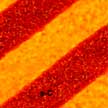 Although graphene properties and applications have already been well-discussed in the literature, it also is important to understand how 2D chemistry of graphene and graphene analogs is related to various applications. Graphene functionalization modifies the unique 2D features of graphene. In this way, the electronic and physical properties of graphene can be controlled toward the given purpose such as highly effective novel electronic device applications. Already, graphene functionalization such as adsorption, intercalation, and doping toward device applications has attracted great attention.
Although graphene properties and applications have already been well-discussed in the literature, it also is important to understand how 2D chemistry of graphene and graphene analogs is related to various applications. Graphene functionalization modifies the unique 2D features of graphene. In this way, the electronic and physical properties of graphene can be controlled toward the given purpose such as highly effective novel electronic device applications. Already, graphene functionalization such as adsorption, intercalation, and doping toward device applications has attracted great attention.
Aug 10th, 2017
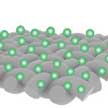 Wearable energy harvesters are greatly attractive and receive intensive research efforts in recent years, aiming at powering various emerging flexible and wearable electronics to meet the requirements of smart fabrics, motion tracking and health monitoring. Researchers now have developed a coating based on cellulose-derived hydrophobic nanoparticles and demonstrated its application as a wearable water triboelectric generator that harvests energy from water flow. This innovative fabric-based TEG has self-cleaning and antifouling properties.
Wearable energy harvesters are greatly attractive and receive intensive research efforts in recent years, aiming at powering various emerging flexible and wearable electronics to meet the requirements of smart fabrics, motion tracking and health monitoring. Researchers now have developed a coating based on cellulose-derived hydrophobic nanoparticles and demonstrated its application as a wearable water triboelectric generator that harvests energy from water flow. This innovative fabric-based TEG has self-cleaning and antifouling properties.
Aug 7th, 2017
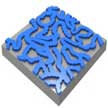 Quasi-periodic and random patterns in nature can exhibit extraordinary functions, such as iridescent color in bird wings, strong adhesion in gecko feet, and water repellency from lotus leaves. However, nature-inspired 3D nanostructures can be prohibitively expensive to make using modern nanoscale manufacturing processes. In new work, researchers a design approach integrated with scalable nanomanufacturing that can rapidly optimize and fabricate quasi-random photonic nanostructures.
Quasi-periodic and random patterns in nature can exhibit extraordinary functions, such as iridescent color in bird wings, strong adhesion in gecko feet, and water repellency from lotus leaves. However, nature-inspired 3D nanostructures can be prohibitively expensive to make using modern nanoscale manufacturing processes. In new work, researchers a design approach integrated with scalable nanomanufacturing that can rapidly optimize and fabricate quasi-random photonic nanostructures.
Aug 1st, 2017
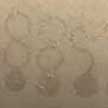 Researchers have developed a stretchable and transparent graphene-based electronic tattoo (GET) sensor that is only hundreds of nanometers thick but demonstrates high electrical and mechanical performance. They show that a GET can be fabricated through a simple wet-transfer/dry-patterning process directly on tattoo paper, allowing it to be transferred on human skin exactly like a temporary tattoo, except this sensor is transparent. Due to its ultra-thinness, a GET can fully conform to the microscopic morphology of human skin via just van der Waals interactions and can follow arbitrary skin deformation without mechanical failure or delamination for an extended period of time.
Researchers have developed a stretchable and transparent graphene-based electronic tattoo (GET) sensor that is only hundreds of nanometers thick but demonstrates high electrical and mechanical performance. They show that a GET can be fabricated through a simple wet-transfer/dry-patterning process directly on tattoo paper, allowing it to be transferred on human skin exactly like a temporary tattoo, except this sensor is transparent. Due to its ultra-thinness, a GET can fully conform to the microscopic morphology of human skin via just van der Waals interactions and can follow arbitrary skin deformation without mechanical failure or delamination for an extended period of time.
Jul 31st, 2017
 Neural interfaces establish direct communication between the central nervous system (CNS) and a sovereign, man-made digital system. This technology is perhaps the most important advance in the study and treatment of the brain is the development of the neural interface. Nanotechnology fabrication methods can overcome the limitations of existing interface devices by producing electrodes with an extremely high surface to volume ratio, i.e., more probe units within the same volume, resulting in unprecedented specificity.
Neural interfaces establish direct communication between the central nervous system (CNS) and a sovereign, man-made digital system. This technology is perhaps the most important advance in the study and treatment of the brain is the development of the neural interface. Nanotechnology fabrication methods can overcome the limitations of existing interface devices by producing electrodes with an extremely high surface to volume ratio, i.e., more probe units within the same volume, resulting in unprecedented specificity.
Jul 26th, 2017
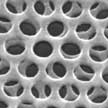 Chiral metamaterials with strong chiroptical properties are an interesting new platform for optical signal modulation. Although plasmonic super chiral fields have been successfully applied to detect the chiral structures of proteins, it has remained challenging to detect the structural handedness of drug molecules due to their small size and thinner film adsorbed on the surface of metamaterials. Researchers now have reported a new type of plasmonic chiral metamaterial by stacking two layers of identical achiral gold nanohole arrays into moire patterns.
Chiral metamaterials with strong chiroptical properties are an interesting new platform for optical signal modulation. Although plasmonic super chiral fields have been successfully applied to detect the chiral structures of proteins, it has remained challenging to detect the structural handedness of drug molecules due to their small size and thinner film adsorbed on the surface of metamaterials. Researchers now have reported a new type of plasmonic chiral metamaterial by stacking two layers of identical achiral gold nanohole arrays into moire patterns.
Jul 25th, 2017
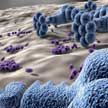 Given the growing impact of nanotechnology on health care, pharmacy, and medicine, there is an increasing and urgent need for the development of reliable methods applicable to detect the biological contamination of nanoparticles. A new method offers a solution to the problems of the nanoparticle interference and correct quantification of bio-contaminants such as endotoxins. This proposed method is based on optical absorbance measurements.
Given the growing impact of nanotechnology on health care, pharmacy, and medicine, there is an increasing and urgent need for the development of reliable methods applicable to detect the biological contamination of nanoparticles. A new method offers a solution to the problems of the nanoparticle interference and correct quantification of bio-contaminants such as endotoxins. This proposed method is based on optical absorbance measurements.
Jul 24th, 2017
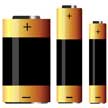 Graphene currently is the most studied material on the planet - this is especially true for charge storage and the results from many laboratories confirm its potential to change today's energy-storage landscape. Specifically, graphene could present several new features for energy-storage devices, such as smaller capacitors, completely flexible and even rollable energy-storage devices, transparent batteries, and high-capacity and fast-charging devices.
Graphene currently is the most studied material on the planet - this is especially true for charge storage and the results from many laboratories confirm its potential to change today's energy-storage landscape. Specifically, graphene could present several new features for energy-storage devices, such as smaller capacitors, completely flexible and even rollable energy-storage devices, transparent batteries, and high-capacity and fast-charging devices.
Jul 20th, 2017
 Although graphene properties and applications have already been well-discussed in the literature, it also is important to understand how 2D chemistry of graphene and graphene analogs is related to various applications. Graphene functionalization modifies the unique 2D features of graphene. In this way, the electronic and physical properties of graphene can be controlled toward the given purpose such as highly effective novel electronic device applications. Already, graphene functionalization such as adsorption, intercalation, and doping toward device applications has attracted great attention.
Although graphene properties and applications have already been well-discussed in the literature, it also is important to understand how 2D chemistry of graphene and graphene analogs is related to various applications. Graphene functionalization modifies the unique 2D features of graphene. In this way, the electronic and physical properties of graphene can be controlled toward the given purpose such as highly effective novel electronic device applications. Already, graphene functionalization such as adsorption, intercalation, and doping toward device applications has attracted great attention.

 Subscribe to our Nanotechnology Spotlight feed
Subscribe to our Nanotechnology Spotlight feed





